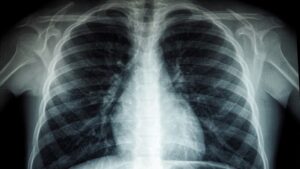[ad_1]
Crush syndrome is the case of muscle edema (swelling), shock, kidney failure, heart and respiratory failure, which develops as a result of crushing and pressing a part or whole of the body.
Traffic accidents, work accidents, wars, avalanches, landslides
Although it is among the causes of crush syndrome, the most common cause of this syndrome is being under a collapse as a result of an earthquake.
HISTORY OF CRUSH SYNDROME DEFINITION
Crush syndrome, which is one of the common complications after the earthquake, was first reported in 1909 after the Messina earthquake. People who were rescued from the wreckage after the earthquake showed a picture of weakness, muscle swelling and brown urine.
and it was observed that most of these people died in the hospital soon after.
The cause of this picture, called Crush syndrome, was first revealed by the nephrologist Bywaters in 1940. Dr. Bywaters studied patients who were rescued alive from the wreckage of the May 1941 bombardment of London for three to four hours, with no injuries other than the compression of a single limb. Some time after it was removed from the wreckage, this
observed that people had a decrease in blood pressure, a decrease in the amount of urine and an increase in the level of blood urea. After his research on these people, Dr. Bywaters stated that the harmful substances released from the oppressed muscles cause this syndrome. A few years later, as a result of his experiments on rabbits, he showed that the substance that harms the body and impairs the functioning of the kidneys is a protein called myoglobin, which is produced by muscle breakdown. Dr. Bywaters, muscle
He emphasized that in order to correct this picture, which develops as a result of damage to the kidneys and disrupts the functioning of the kidneys, blood pressure should be increased as soon as possible and the damaged limb should be removed, ie amputated.
Dr. In the years following Bywaters’ observations, significant progress has been made in the fight against Crush syndrome. under the debris
Compared to World War II, when 91% of the remaining people were lost, this rate fell to 50% in the Vietnam War. This is the death rate
The most important reasons for the decline were the shortening of the recovery time from the wreckage and the use of dialysis method for the treatment of kidney failure.
The increase in blood pressure, thanks to the intravenous fluids given to the people trapped under the debris, significantly reduced the Crush syndrome and the resulting kidney failure. A study conducted in Israel compared the treatments applied to those trapped under buildings that were demolished between 1979 and 1982. Despite the fluid therapy started after an average of 12 hours in 7 people who were rescued alive from the wreckage, all of them developed kidney failure. However, only one of the eight people rescued from the wreckage in 1982 and immediately started on fluid therapy was diagnosed with kidney failure. This result underlined the importance of starting fluid therapy as soon as possible for people trapped under the debris.

SYMPTOMS OF CRUSH SYNDROME
Crush syndrome is the most common cause of death of people who survived the earthquake after the rubble.
is common. Among the symptoms of Crush syndrome, which develops as a result of the contents of the crushed striated muscles mixing into the bloodstream,
painful and swollen limbs, low blood pressure, weakness, disruption in heart rhythm (arrhythmia), respiratory failure, decreased urine output and dark colored urination. The general health of the person who was pulled out of the wreckage may seem quite good at first.
There may be symptoms such as swelling in a single limb, weakness in the limb, or inability to move it. However, after a while, a decrease in blood pressure, respiratory failure and death may occur. Increasing the amount of fluid in the bloodstream via serum is the most important and first treatment step. During recovery, the person should be given fluids (at a rate of one liter per hour) by adding serum quickly. To increase the amount of urine, 8-10 liters of fluid and diuretic drugs are given per day. Since the blood potassium level can reach dangerous levels in people with Crush syndrome, it is very important to start the treatment against this condition, even during the rescue, to lower the blood potassium level. Relieving the swollen muscle sheath by cutting (fasciotomy) or removing the limb with impaired circulation are emergency surgical treatment methods.
[ad_2]






